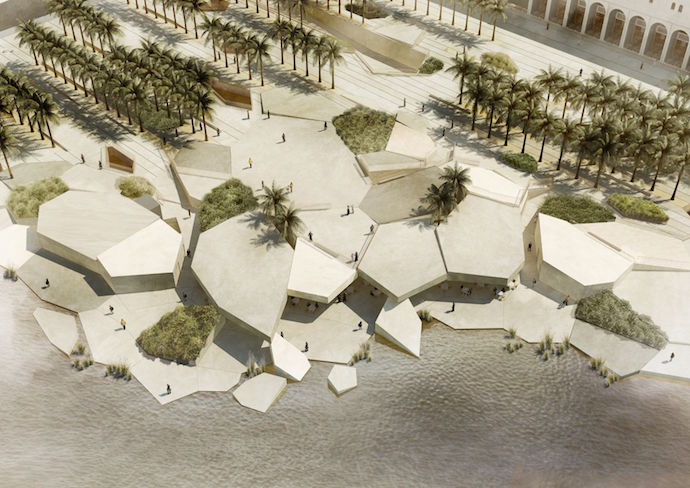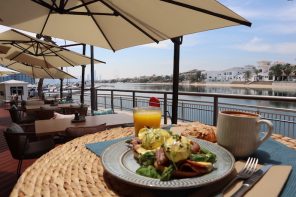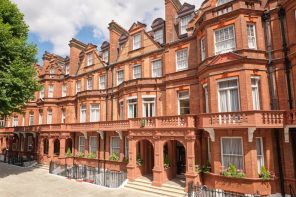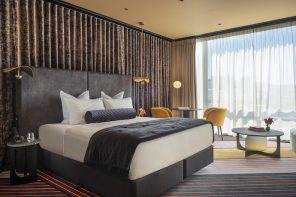One of UAE’s most important historic and cultural landmark is re-opening.
If you or your friends have been living in the UAE for a while, you must have visited Qasr Al Hosn, that was a thriving souq filled with art, and craft or cultural activities, right in the heart of the city.
We have been anxiously awaiting the reopening of this unique landmark and the good news is that it will welcome guests starting from the 7th of December 2018.
A new cultural destination awaiting us.
The Department of Culture and Tourism – Abu Dhabi (DCT Abu Dhabi) announced that
the much-anticipated grand opening of Al Hosn will take place on 7 December 2018.
![]()
Rendering of Al Hosn site, Abu Dhabi. © Department of Culture and Tourism – Abu Dhabi.
Al Hosn is the city’s original urban block and will comprise four interrelated components: the historic Qasr Al Hosn Fort, the Cultural Foundation, the National Consultative Council building, and the House of Artisans.
The official launch will be a celebration of Abu Dhabi’s rich history and culture, with days of public programming to mark the occasion.
AL HOSN SITE
![]()
Aerial photograph of Abu Dhabi, 1962. Ronald Codrai © Department of Culture and Tourism – Abu Dhabi.
Al Hosn site has been designed to reinstate Qasr Al Hosn fort in a coastal landscape while also celebrating the urbanization that has come with the city’s rapid growth; a celebration of Emirati heritage and identity, past and present.
The masterplan is divided diagonally into two areas with distinctive and coherent identities.
On one side is the historic area around Qasr Al Hosn which re-establishes the original setting of a solitary building on a sand plain, with an organic and natural coastal desert landscape.
On the other side is a modern heritage area around the Cultural Foundation, an urban city grid layout with a more man-made, geometrical expression of hard surfaces destined for a series of cultural activities.
![]()
Rendering of Al Hosn site, Abu Dhabi. © Department of Culture and Tourism – Abu Dhabi.
QASR AL HOSN, a witness to Abu Dhabi’s vibrant history
![]()
Aerial view of Qasr Al Hosn in the 1960s. © BP plc, Courtesy of National Archives.
Over the past two centuries, it has previously been home to the ruling family, the seat of government, the consultative council, and the national archives.
![]()
The late Sheikh Zayed Bin Sultan Al Nahyan attending the first session of the National Consultative Council in Abu Dhabi, October 3, 1971. © Al Ittihad Newspaper.
Qasr Al Hosn is the oldest and most significant heritage site in Abu Dhabi city, encompassing two iconic buildings: The Inner Fort dating back to around 1795 and the Outer Palace, which was built in the 1940s.
This Qasr has major significance for Abu Dhabi and its people. The name Hosn refers to the Inner Fort, incorporating the city’s first permanent structure, a coral and sea stone watchtower built to protect the settlement established on the island in the 1760s.
![]()
Qasr Al Hosn North Façade, 1960s. Prof. John Wilkinson © Department of Culture and Tourism – Abu Dhabi.
Qasr refers to the Outer Palace built around the Inner Fort by Sheikh Shakhbut bin Sultan Al Nahyan in the 1940s, housing the ruling family as well as hosting the ruler’s majlis sessions. With the rule of Sheikh Shakhbut bin Sultan Al Nahyan, witnessing the economical shift from pearling to oil, in the ensuing decades Qasr Al Hosn gradually changed in structure and function, transforming from the seat of political power and home of the ruling family to the cultural heart of the city.
![]()
A view of the north façade of Qasr Al Hosn. © BP plc, Courtesy of National Archives.
Now transformed into a museum following several years of rigorous and ambitious conservation works, Qasr Al Hosn is a national monument that traces the city’s development from a settlement reliant on fishing and pearling in the 18th Century, to a modern, global metropolis, with the fort now surrounded by Abu Dhabi’s skyscrapers and a dynamic downtown area.
The permanent exhibitions in these spaces will offer a multi-layered visitor experience, creating awareness of Qasr Al Hosn as the constant witness to Abu Dhabi’s narrative; providing insights into the lives of the men, women and children who lived in the Outer Palace; and exploring the story of the conservation of the Fort’s structures.
The exhibitions will be brought to life by a permanent collection and mediations ranging from archival materials to audio-visuals and interactive experiences.
Public programming in the Qasr Al Hosn Fort area will include specialist tours such as archaeology, and architectural tours; re-enactments of aspects of daily life and rituals at the fort; a Majlis programme that will introduce the Fort’s visitors to the history and significance of the Majlis; and activities for children and youth.
CULTURAL FOUNDATION
![]()
Cultural Foundation, Abu Dhabi. © Department of Culture and Tourism – Abu Dhabi.
Founded by the late Sheikh Zayed bin Sultan Al Nahyan in 1981, Cultural Foundation was the region’s first dedicated multipurpose non-profit cultural centre, conceived as a public institution with a mandate to foster all forms of intellectual and creative activity. It was the embodiment of Sheikh Zayed’s desire to nurture the cultural consciousness and identity of all citizens of the recently-formed nation of the UAE.
With the first National Library, a performing arts wing, and at its center, an exhibition hall and art workshops, it became a home of culture, knowledge exchange, and debate for artists, poets, intellectuals and academics, and a beloved community space, a gathering place for friends and families. A beacon for the UAE and regional cultural scenes, the Cultural Foundation hosted many local and regional artists’ first exhibitions and became a window through which Abu Dhabi engaged with ideas and people from across the world.
The much-anticipated reopening of Cultural Foundation comes after an extensive refurbishment, with major upgrades including the introduction of the first Children’s Library of its kind, a vibrant open gallery for visual arts, indoor and outdoor exhibition spaces, a 900-seat theatre and outdoor amphitheater, learning and workshop facilities, and food and beverage areas.
![]()
Rendering of Children’s Library, Abu Dhabi. © Department of Culture and Tourism – Abu Dhabi.
To mark the occasion of its reopening in December, the Foundation’s Visual Arts Centre will present a landmark exhibition which will focus on the building’s history as a beacon for local artists.
Cultural Foundation will re-open in phases with 7 December allowing access to the Visual Arts Centre, which will feature exhibition halls and art studios. The two remaining components – a theatre and the Children’s Library – will open in 2019.
![]()
Rendering of Children’s Library, Abu Dhabi. © Department of Culture and Tourism – Abu Dhabi.
HOUSE OF ARTISANS
Located alongside Qasr Al Hosn and Cultural Foundation, House of Artisans will serve as a focal point for the promotion and preservation of the UAE’s intangible heritage. In 2011, UNESCO listed the Al Sadu – weaving in Arabic – on its List of Intangible Cultural Elements for Urgent Safeguarding.
House of Artisans was founded as a coordinated effort to protect and support this and other traditional Emirati crafts and those who practice them.
House of Artisans will serve as a centre for not only preserving and displaying the traditional crafts of the United Arab Emirates, but will also enable the all-important transmission of knowledge and skills around these crafts, ensuring their future survival for generations to come. With a focus on the core skills of weaving, palm braiding, and embroidery.
House of Artisans aims to bring these traditional crafts of the past to the heart of contemporary culture and will offer training courses, educational workshops, and other public events.
For more information, please visit www.alhosn.ae.
Join our WhatsApp group and receive curated news and offers in your WhatsApp Feed














